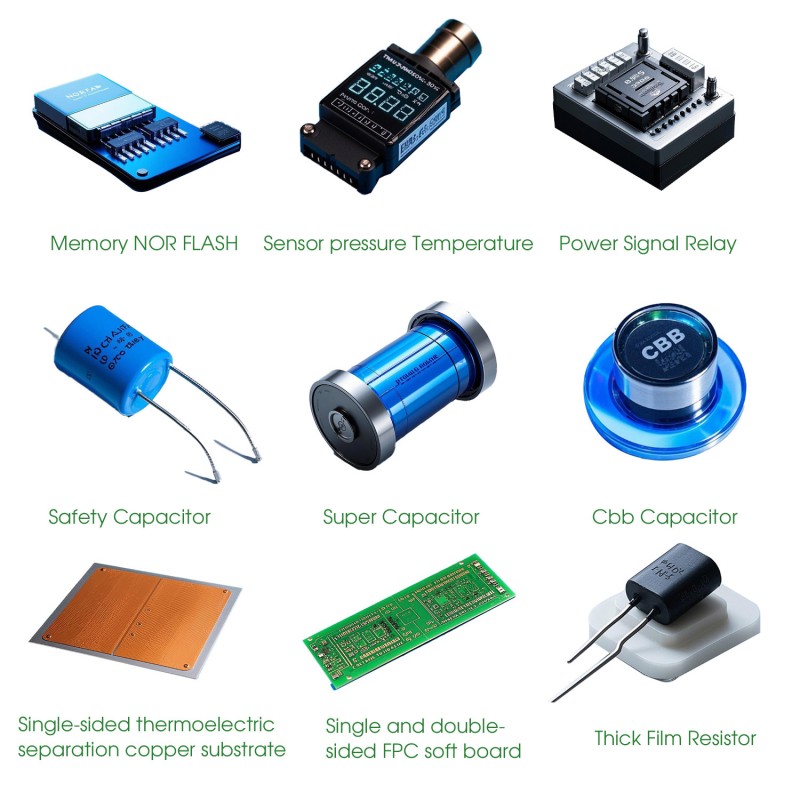
 English
English  Español
Español Português
Português русский
русский Français
Français 日本語
日本語 Deutsch
Deutsch tiếng Việt
tiếng Việt Italiano
Italiano Nederlands
Nederlands ภาษาไทย
ภาษาไทย Polski
Polski 한국어
한국어 Svenska
Svenska magyar
magyar Malay
Malay বাংলা ভাষার
বাংলা ভাষার Dansk
Dansk Suomi
Suomi हिन्दी
हिन्दी Pilipino
Pilipino Türkçe
Türkçe Gaeilge
Gaeilge العربية
العربية Indonesia
Indonesia Norsk
Norsk تمل
تمل český
český ελληνικά
ελληνικά український
український Javanese
Javanese فارسی
فارسی தமிழ்
தமிழ் తెలుగు
తెలుగు नेपाली
नेपाली Burmese
Burmese български
български ລາວ
ລາວ Latine
Latine Қазақша
Қазақша Euskal
Euskal Azərbaycan
Azərbaycan Slovenský jazyk
Slovenský jazyk Македонски
Македонски Lietuvos
Lietuvos Eesti Keel
Eesti Keel Română
Română Slovenski
Slovenski
Chip IC: The Most Integrated Electronic Technology Development!
2025-04-14
As the core of modern electronic devices, Chip IC plays an indispensable role in information processing, communication, computing, control and other fields. With the rapid development of science and technology, the complexity and functions of IC chips are becoming increasingly powerful, and their applications have penetrated into all aspects of our daily life.

The construction of Chip IC covers several key components: First, the substrate. Chip IC is usually based on silicon (Si) wafers. Silicon performs well in current control with its excellent semiconductor properties. The size and thickness of silicon wafers have a direct impact on chip performance and manufacturing process. In addition, modern Chip IC may also incorporate other semiconductor materials, such as germanium (Ge), gallium arsenide (GaAs), etc. These materials can show better performance in specific application scenarios.
Next is circuit wiring, which is the core component inside the chip. Electronic components such as transistors, resistors and capacitors are interconnected through metal wires to form a complex circuit network, thereby realizing signal transmission and processing. Furthermore, logic gates and functional units are also indispensable components of chips. Logic gates (such as AND gates, OR gates, NOT gates, etc.) and functional units (such as adders, multipliers, memories, etc.) work together to complete complex calculations and logic processing tasks.
Finally, the packaging link is also crucial. After the manufacturing is completed, the Chip IC will be packaged into a form that is easy to use, which not only protects the internal circuit, but also provides a connection interface with external devices. Common packaging types include DIP, SOIC and QFN.
The working principle of Chip IC can be summarized in several key steps: First, the input signal, that is, the external electrical signal (such as voltage or current) is introduced to the input end of the chip. These signals may be in digital form (such as a combination of 0 and 1) or in analog form (such as continuously changing current and voltage).
Next is the signal processing link, and the logic gates and functional units inside the chip begin to operate. For digital ICs, the signal will perform logical operations between logic gates and process the input signal according to the preset function, such as an adder adding two numbers to get the result. Analog ICs may amplify, modulate or filter the input signal. Inside the chip, the movement of electrons and holes forms an electric current, which flows in the transistor. Transistors can turn on or off according to the changes in the input signal, thereby controlling the on and off of the current. Multiple transistors are connected to each other to form a complex switching network to realize various complex computing functions.
Finally, the output signal is generated and transmitted. After signal processing, the Chip IC generates corresponding output signals, which may be control signals or processed data. These output signals are sent to external devices to control the working status of motors, lights or other electronic components, or to exchange data with other chips or processing units through data buses.
Chip IC, an important cornerstone of modern electronic technology, has penetrated into every aspect of our daily life with its small body, excellent functions and ultra-high reliability. In the field of computers and mobile devices, CPUs, GPUs, and memory chips are all masterpieces of IC chips, which make our electronic devices smart and efficient. Communication equipment such as modems, routers and base stations also rely on the support of IC chips, which ensure the smooth transmission of information. In addition, smart home devices, automation controllers, etc. in the fields of home appliances and industrial control, as well as engine control units (ECUs), airbag control systems, and in-car entertainment systems in the field of automotive electronics, all rely on the power of IC chips. It can be said that IC chips are leading the innovation and development of science and technology, and driving human society towards an era of smarter and more powerful electronic devices.




